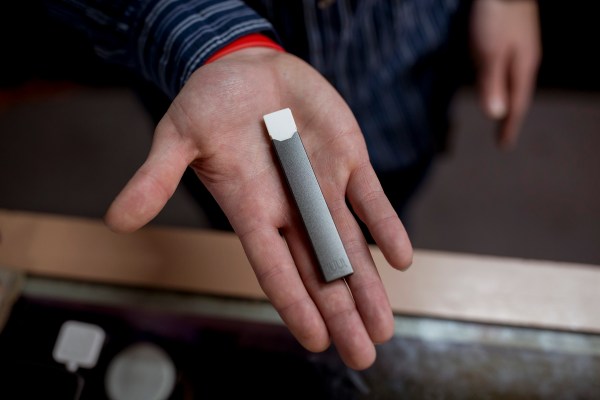At least a dozen people have died of an acute lung condition related to vaping, and while officials aren’t ready to pin it on any one chemical or brand, they are warning that many of the patients reported buying THC cartridges from “informal sources” — which is to say off the street or online.
“The vast majority of patients received their products on the streets from friends or dealers,” said Dr. Jennifer Layden, chief epidemiologist for the Illinois Department of Health, in a press call today.
Unfortunately this also resulted in a huge variety of brand names and types of cartridges and devices. “Among all 86 patients in our study, 234 unique e-cigarette or vaping products across 87 different brands were reported,” Layden said. THC products were reported by more than three quarters of those surveyed, with only 16 percent of patients saying they used only nicotine cartridges.
The most common brand name, which two thirds of the patients surveyed reported using, was “Dank Vapes.” While testing of products with this brand name has not yet been carried out, it’s probably safest to avoid them for now. Studies have shown that even popular brands like Juul don’t know exactly what chemicals are produced when these substances are vaporized. And an NBC News-commissioned study showed that many off-brand cartridges contained pesticides that could form hydrogen cyanide when heated.
“We do not know yet what exactly is making people sick,” emphasized Dr. Anne Schuchat, principal deputy director of the CDC. “For example, whether solvents or adulterants are leading to lung injury or whether cases stem from a single supplier or multiple ones. Because of the variety of chemicals that are present in e-cigarettes or vaping liquids and may be added to e-cigarettes or vaping liquid as well as the diversity of products in circulation, laboratory analysis may be complex, but these are ongoing.”
The CDC, FDA, and individual states and cities have taken a variety of actions, banning vaping outright, restricting sales, and so on. But in many places these sales were already illegal, or were conducted online in such a way that it is difficult to detect. And of course a great deal of the consumption of these products takes place at home or otherwise in private.
The worry, of course, is that by banning the use of vaping products, there is a risk of pushing smokers using them to quit back to cigarettes, which are obviously known to be extremely harmful. It’s certainly not ideal, but if certain vaping materials are causing immediate and serious harm to people, they shouldn’t be used at all, let alone as a smoking cessation product. In the meantime proven (though perhaps less convenient) methods of quitting like nicotine gum and patches are still available.
The various medical authorities looking into this outbreak, which now affects more than 800 people, are being very cautious in identifying the cause, but are updating press regularly with new figures and any relevant information as the investigation proceeds.
